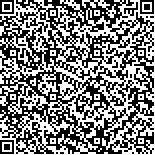下载中心
优秀审稿专家
优秀论文
相关链接
摘要

由于外部成像环境和传感器本身设计指标的差异,不同遥感平台同一波段影像之间常常存在不一致。在多源遥感定量研究中,对外部成像环境导致的差异关注较多,而对以光谱响应函数(SRF)和空间点扩散函数(PSF)为代表的值感器本身设计指标,导致的影像不一致性(差异性)则考虑相对较少,这给后续研究结果的分析与讨论带来一定不确定性。为了提供一种全面、客观对不同遥感平台同一波段影像一致性评价方法,本文采用控制变量法的评价策略,介绍了利用Hyperion高光谱影像结合光谱响应函数模拟各种宽波段影像的方法,并将其用于多平台同一波段影像之间的一致性评价;同时在此基础上探讨了考虑PSF对高-低空间分辨率影像聚合过程的影响,为不同平台、同一波段、不同空间分辨率影像之间的一致性评价提供了技术参考。通过对常见的3种典型传感器Landsat ETM+,Terra MODIS,NOAA AVHRR 3近红外波段进行模拟、比较和一致性评价,结果表明:(1)利用本文所提出的宽波段光谱模拟方法,能较准确地模拟各种宽波段影像(在本文中平均相对误差的绝对值最大为-2.371%),并可用于多平台同一波段影像的数据评价(从光谱响应的角度)。 (2)为了比较不同平台、同一波段、不同空间分辨率之间的差异性,可将其中高分辨率影像进行尺度上推,得到与其中低分辨率影像相同像元大小的影像,然后再进行评价。在尺度上推过程中,需先考虑PSF效应(可用高斯低通滤波模拟),然后进行平均值聚合即可。在此基础上进行的一致性评价才是比较客观的,特别是针对异质性区域。本文所采用的评价方法不仅可为评价不同平台波段同一波段影像之间一致性提供很好的解决途径,而且为多源遥感数据选择提供了一种决策依据。
Inconsistencies often occur among same band images from multi-source remote sensing platforms because of differences in imaging environments and satellite sensor design parameters. Differences caused by imaging environments have been explored in numerous quantitative studies. However, differences caused by the design parameters of sensors are given scant attention, thus leading to several inaccuracies and misinterpretations of study results. Therefore, based on the combination of Earth Observing-1 (EO-1) Hyperion hyperspectral data and two key functions of a sensor imaging system, i. e., Spectral Response Function (SRF) and Point Spread Function (PSF), Near-Infrared (NIR) band images of three typical sensors, namely, Landsat Enhanced Thematic Mapper Plus (ETM+), Terra Moderate-Resolution Imaging Spectroradiometer (MODIS), and National Oceanic and Atmospheric Administration Advanced Very High Resolution Radiometer (AVHRR 3), were simulated, compared, and consistently evaluated. The study obtained the following results. (1) The SRF can cause several discrepancies among the three simulated NIR bands, namely SMODIS, SETM+, and SAVHRR 3. The difference between SMODIS and SETM+ was relatively small (approximately -0.940% with a mean difference of -0.675), whereas the difference between SETM+ and SAVHRR 3 was relatively large (approximately 10.129% with a mean difference of 3. 448). Thus, a thorough evaluation of the consistency of same band images from multi-source sensors should be conducted before they could be applied to further research. (2) The accuracy of simulating moderate or low spatial resolution imagery by aggregating high spatial resolution imagery can be improved by incorporating the PSF, particularly in heterogeneous areas. (3) The simulation method adopted in this study, i. e., EO-1 Hyperion imagery combined with the PSF and SRF of one sensor, can simulate wideband moderate- or low-resolution images of that sensor effetely with a relative mean difference less than -2. 371%. This study does not only provide an effective means of evaluating the consistency of same band images from multi-source wideband remote sensing platforms, but also offers a better method of selecting more accurate multi-source remotely sensed data.

